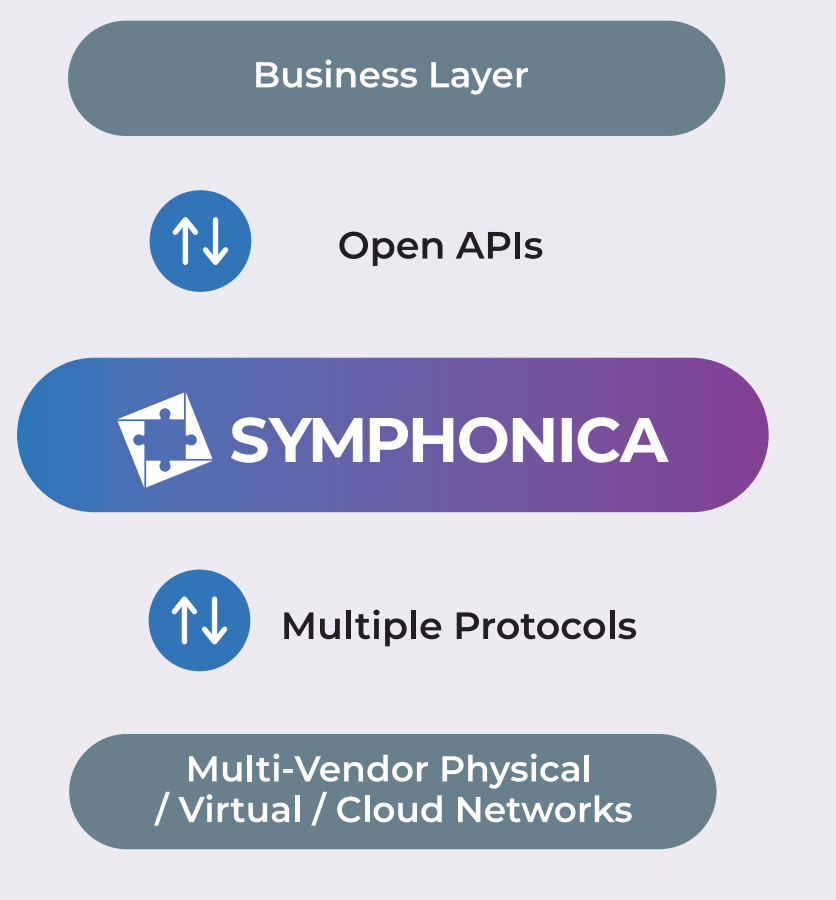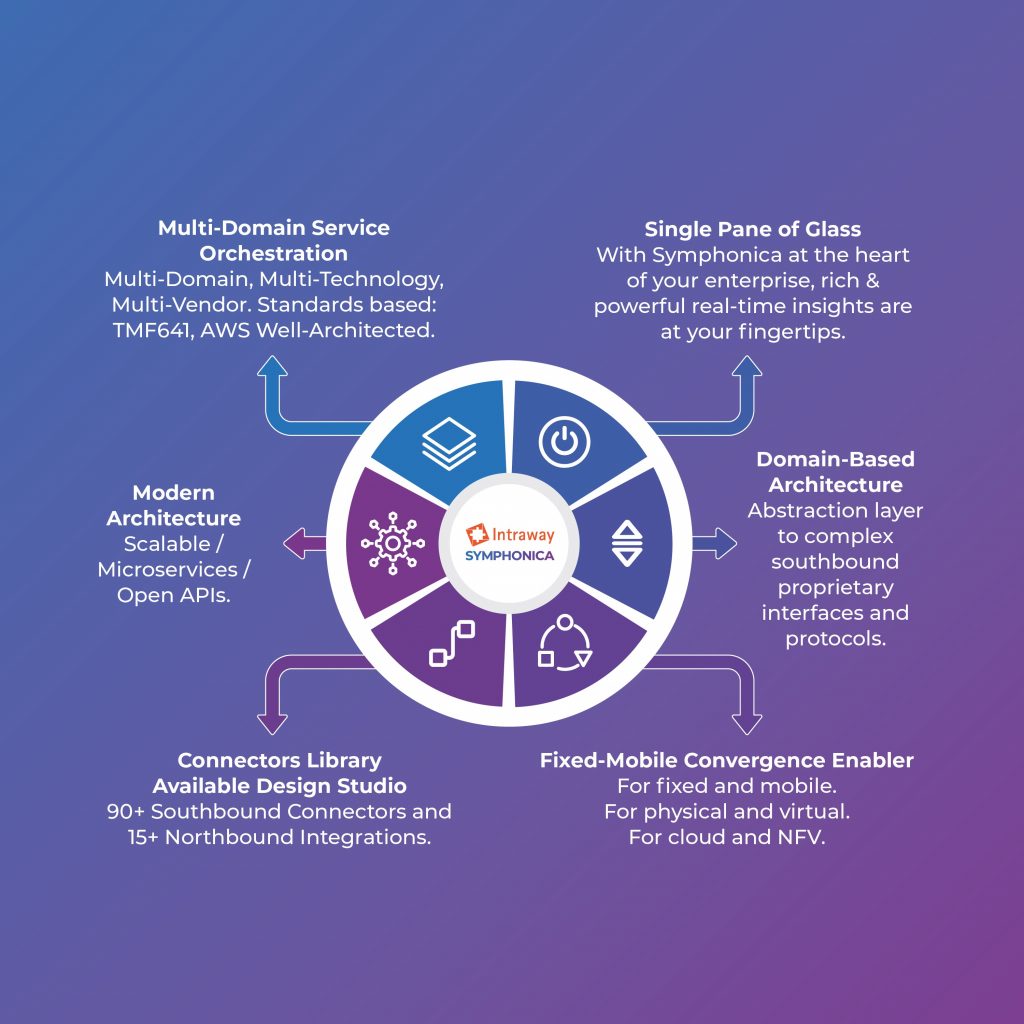According to a recent report on intent-based networking covered by Research and Markets, “The Global Intent-Based Networking Market is estimated to be US$1.27 billion in 2021 and is expected to reach $5.09 billion by 2026, growing at a CAGR of 32%.” Intent-driven autonomous networks (IDANs) are an essential component of Digital Transformation, enabling self-sufficiency in network functions such as operation, monitoring, recovery, reconfiguration and more. Self-healing networks define the future of the telecom industry, but the need for enhanced speed and agility poses a challenge to telecom digitalisation.
As communications service providers (CSPs) make the transition to digital service providers (DSPs), they are struggling to achieve IDANs, says Mark Abolafia, SVP, business development and global channels programme at Intraway. Traditional Operational Support Systems (OSS) and Business Support Systems (BSS) tools prove insufficient amid the complexity of 5G rollouts, heterogeneous networks and the time-to-market demands of next-gen services. CSPs striving to implement IDANs must automate their OSS and implement an orchestration system that addresses the challenges of monetising 5G and other facets of the network by driving faster next-gen service delivery across highly distributed networks.
A cloud-native, standards-based service orchestration and activation solution will help operators enhance network speed and agility by automating service lifecycle management, thereby reducing time-to-market for next-gen services and satisfying the demands of today’s customers. No-code orchestration plays a crucial role in facilitating a positive return on operators’ digital transformation investments.
IDAN evolution for service delivery
According to the TM Forum, “Autonomous systems are governed according to specified objectives known as intents.” By identifying their business intent, operators can define service and network intents and support those intents through assurance systems that guarantee quality-of-service. These intents should work at the three layers of the TM Forum AN Reference architecture, including the business layer, service layer and resource layer.

By meeting these intents, autonomous networks hold numerous benefits for operators, including enhanced computational power, dynamic network connectivity and unlimited storage. IDANs empower operators by eliminating the need for human intervention in network functions, minimising the errors common to manual tasks and deployment, lowering OPEX costs and improving performance and resource use efficiency. As networks become more dynamic and software-oriented, operators must follow suit in their OSS stack to deliver next-gen services at speeds that ensure long-term profitability through the novel revenue streams of IDANs. By reducing the time-to-market of these services with automated OSS, operators can meet the demands of traffic growth and the challenges of 5G monetisation.
Applications enabled by IDANs include:
- Autonomous connected vehicles
- AR/VR gaming
- Manufacturing and B2B services
- Healthcare applications remotely connecting healthcare providers to patients
- Communications applications that enable ICT services
Traditional OSS infrastructure is a substantial barrier to securing these new revenue streams, primarily through its slower time-to-revenue to deploy new services and the operational silos new service layers create within traditional systems. This siloed infrastructure hinders timely delivery of new and existing services, long-term revenue growth and customer-centricity. Traditional OSS systems are not standards-based and lack open API functioning, so they create an obstacle to implementing autonomous functionality across multi-vendor, multi-domain networks. So, how can operators remedy the shortcomings of traditional OSS systems and achieve increased network agility and speed to access the benefits of IDANs and their services?
Enabling IDANs with standards-based no-code orchestration
An agile OSS solution that relies on TM Forum standards will satisfy the business objectives of IDANs by automating onboarding, provisioning and orchestration. Using standards-based technology that utilises open APIs, such as TMF921, no-code orchestration integrates across multi-vendor, multi-domain networks, allowing operators to monetise the network itself by satisfying the time-to-market demands of all networking technologies. An automated OSS solution with open APIs empowers operators with the ability to configure and operate networks according to shifting business needs across internal systems and external applications.
Managed overlay services are paramount to securing long-term profitability growth for both 5G and wireline infrastructure. No-code orchestration optimises the business, service and resource layers by automating service lifecycle management across any technology on any network while collating data automatically for valuable business insights. A standards-based OSS solution enhances scalability to enable end-to-end service orchestration, minimising errors in fulfillment while facilitating agile integration with traditional OSS systems.
As bandwidth becomes commoditised and Over-the-Top (OTT) platforms threaten conventional revenue streams, operators must adopt cloud-native, telco-grade OSS solutions that ensure long-term positive business outcomes through zero-touch provisioning and automated no-code orchestration. In turn, these features streamline the journey from passive to “intelligent” networking through the following enhancements:
- Improved agility and speed to meet real-time market demands and changes
- Operational excellence through automated improvements
- Reduced time-to-market for next-gen services, enhancing value streams
- Dynamic provisioning to facilitate more efficient resource usage
- Virtualisation that enables Network-as-a-Service (NaaS), empowering operators with robust, novel business models
Faster delivery of emerging services will address operators’ challenges, especially as they struggle to meet the exponential growth of traffic and connected devices on the network. In an increasingly cloud-first, distributed business world, providers must transform their OSS systems if they wish to stay competitive against software platforms and satisfy customers through the automatic launch of differentiated services and applications.
Speed and agility; essential for IDAN transformation

Speed and agility determine success in today’s business world, and “fast” has taken on a new meaning in the context of service delivery. Today’s customers have a wide range of options and want their services and applications delivered immediately and seamlessly. As customer demands evolve and become more dynamic, operators must rethink their OSS infrastructure and implement dynamic OSS solutions that enhance network speed and agility. Intelligent OSS automation within autonomous networks is the best way to provide customers with customised products that anticipate their business needs faster than ever before. Anything less will push them to a different competitor, especially within the saturated operator market.
Automated no-code orchestration unifies business goals with IT infrastructure by empowering operators with faster service delivery through a reduced time-to-market of weeks. This is a vast improvement on the time-to-market of traditional OSS and BSS tools, which often take years to implement. No-code orchestration features real-time inventory updates and shrinks the IT skills gap through accessible graphical interfaces that help operations and network engineers visualise simplified workflows for provisioning services. This feature enables an agile response to real-time market demands, minimising the need for manual coding and reducing the workloads of DevOps teams while enabling faster service delivery and updates across multi-vendor, multi-domain networks.
IDAN transformation with no-code orchestration
Networks are becoming more heterogeneous and distributed, especially amid the rise of differentiated 5G services and multi-vendor environments. CSPs need automated, standards-based OSS solutions that reduce operational costs, minimise the need for custom code and are adaptable across multi-vendor, multi-domain networks. A vendor-agnostic, standards-based OSS solution is essential to satisfy the requirements of Intent-Driven Autonomous Networks. No-code orchestration platforms reduce the complexity of today’s networks by enhancing network speed and agility through automated service lifecycle management, helping operators realise the benefit of IDANs.
The author, Mark Abolafia, serves as SVP, business development and global channels programme at Intraway.
About the author
He previously served as chief operating officer at Datavision, a global SDN systems integrator. Prior to that he held senior roles in managing service provider consulting and systems integration businesses, as well as business development in various software and consulting companies in the telecommunications, pharmaceutical/life sciences and financial services verticals.
Comment on this article below or via Twitter: @VanillaPlus OR @jcvplus






